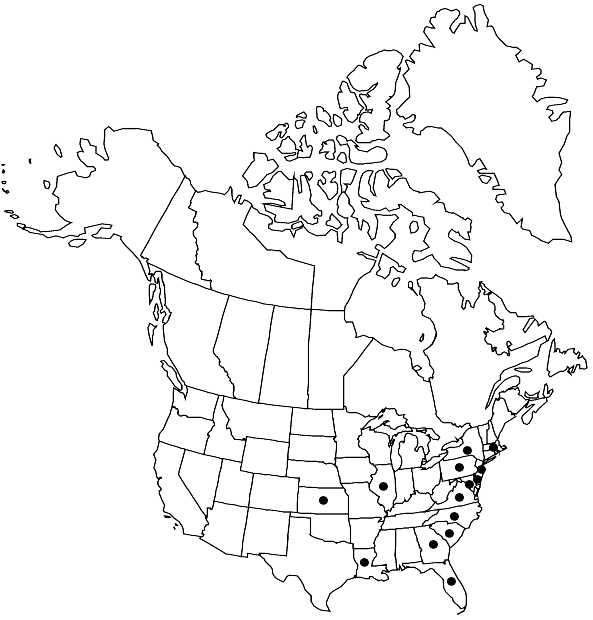Difference between revisions of "Sphagnum trinitense"
Syn. Musc. Frond. 1: 102. 1848,.
FNA>Volume Importer |
FNA>Volume Importer |
(No difference)
| |
Revision as of 21:54, 16 December 2019
Plants moderate-sized, slender and weak-stemmed, green to pale yellow; flaccid and plumose in aquatic forms to more compact and sprawling in emergent forms; green to pale yellow; capitulum not especially enlarged and differentiated. Stems green; superficial cortex of undifferentiated or slightly differentiated cells. Stem leaves ovate-triangular to triangular, 1–1.6 mm; appressed to spreading; apex acute to slightly obtuse; hyaline cells often fibrillose and often 1-septate. Branches straight and unranked, in capitulum tapering at distal end to a point, leaves greatly elongated at distal end. Branch stems green, cortex enlarged with conspicuous retort cells. Branch leaves ovate-lanceolate to lanceolate, 2–3.5 mm; straight, undulate and slightly recurved when dry; margin serrulate; hyaline cells on convex surface with 0–1 small pores at cell apex on concave surface with round wall thinnings in cell angles (often indistinct or lacking); chlorophyllous cells trapezoidal in transverse section and exposed more broadly on the convex surface. Sexual condition monoicous. Spores 26–40 µm; ± roughly to densely granulose.
Phenology: Capsules mature early to mid summer.
Habitat: Submersed or stranded at edge of shallow, acidic pond, lakes, and roadside ditches, mostly in sandy areas of the Atlantic coastal plain
Elevation: low to moderate elevations
Distribution

Del., Fla., Ga., Ill., Kans., La., Md., Mass., N.J., N.Y., N.C., Pa., S.C., Va., South America.
Discussion
Sporophytes are common in Sphagnum trinitense, which can often be distinguished from S. cuspidatum in the field by the appearance of its branches when wet. In this state the branches of S. trinitense just below the capitulum resemble a fine paintbrush drawn out to a pointed tip. See also discussion under 29. S. fitzgeraldii and 39. S. mississippiense. Spore features are taken from H. A. Crum (1984).
Selected References
None.